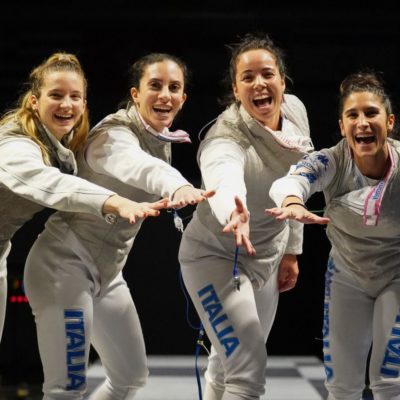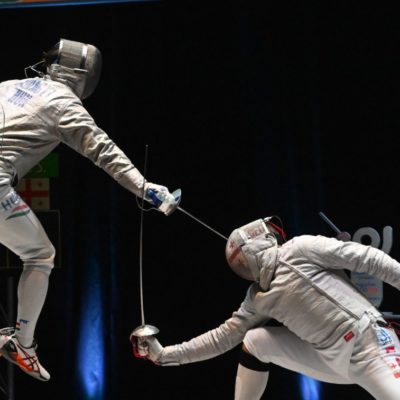Bill Oliver, member of the FOC, sometimes contributes to Fencing.Net by answering some questions that get asked in the Discussion Forum. The question of how footwork and bladework both impact the determination of right of way in foil is addressed here.
Q:On the command fence, both fencers start extending…one moving forward one moving backwards. Both end up hitting valid. Who’s touch?
A: The real question is distance.
At the command fence, the fencers are, by definition, out of distance. Sooner or later, one or the other will have to cause the distance to close. If the advancing fencer does footwork to compress the distance, then he’s attacking. If the retreating fencer changes the distance by stopping, advancing, or slowing down, then he’s the attacker.
Although the rules don’t specifically address the impact of moving backwards on priority, it’s important to focus on the tactical situation, not on one aspect of a complex series of actions.
All things being equal, the advancing fencer has the advantage. The onus of action falls on the retreating fencer to create something. (sooner or later, he’s going to hit the end of the strip!) But, until the distance changes, there is no priority.
Follow up question:
How often is the retreating fencer being given priority actually done in the real world? It seems that the assumption is that by being able to hit, the advancing fencer has the attack. How can the retreating fencer (by stopping or slowing down to cause the distance to compress) actually convince the referee that it was their action (slowing down) vs. the advancer’s action (maintaining constant “pressure” until the retreating fencer couldn’t “keep up”)?
How can this be answered so that it will fit the real world of how things are perceived on the piste by the referee? Any other visual queues that you look for?
A:
Well, in the real world, this type of action is rarely, if ever seen. Fencers just don’t retreat and make threatening actions with the blade, as a rule. This was a very hypothetical situation, to illustrate
a point in the text of the rules.
That said, however, I’ve seen (and used) the trick of retrating to draw the opponent out, then a sudden change of direction, or even just a sudden slowing down, can give the retreater a tactical advantage, and
change the tables.
In that case, advance and retreating had nothing to do with attack.
In most situations, the beginning of priority in both foil and saber is created by dominance of distance. The fencer who colapses the distance (in the opinion of the referee) has the first indicaiton of priority. He then needs to do something. Hesitation at this point is always fatal. In saber, there is the added requirement of correctness of execution (extended arm, blade at 135 degrees, restrictions on footwork, etc). The requirements in foil are less specific.
Bottom line: in nearly all cases, a retreating fencer cannot have priority, in any weapon. However, the simple fact of a retreat has to be understood within the context of the tactical situation. It might be a setup. Simply retreating doesn’t necessarily lose one the priority. On the other hand, simply going forward, or even extending the arm, doesn’t guarnatee that one is attacking. It’s one of those little things that seperates foil and saber from epee….





